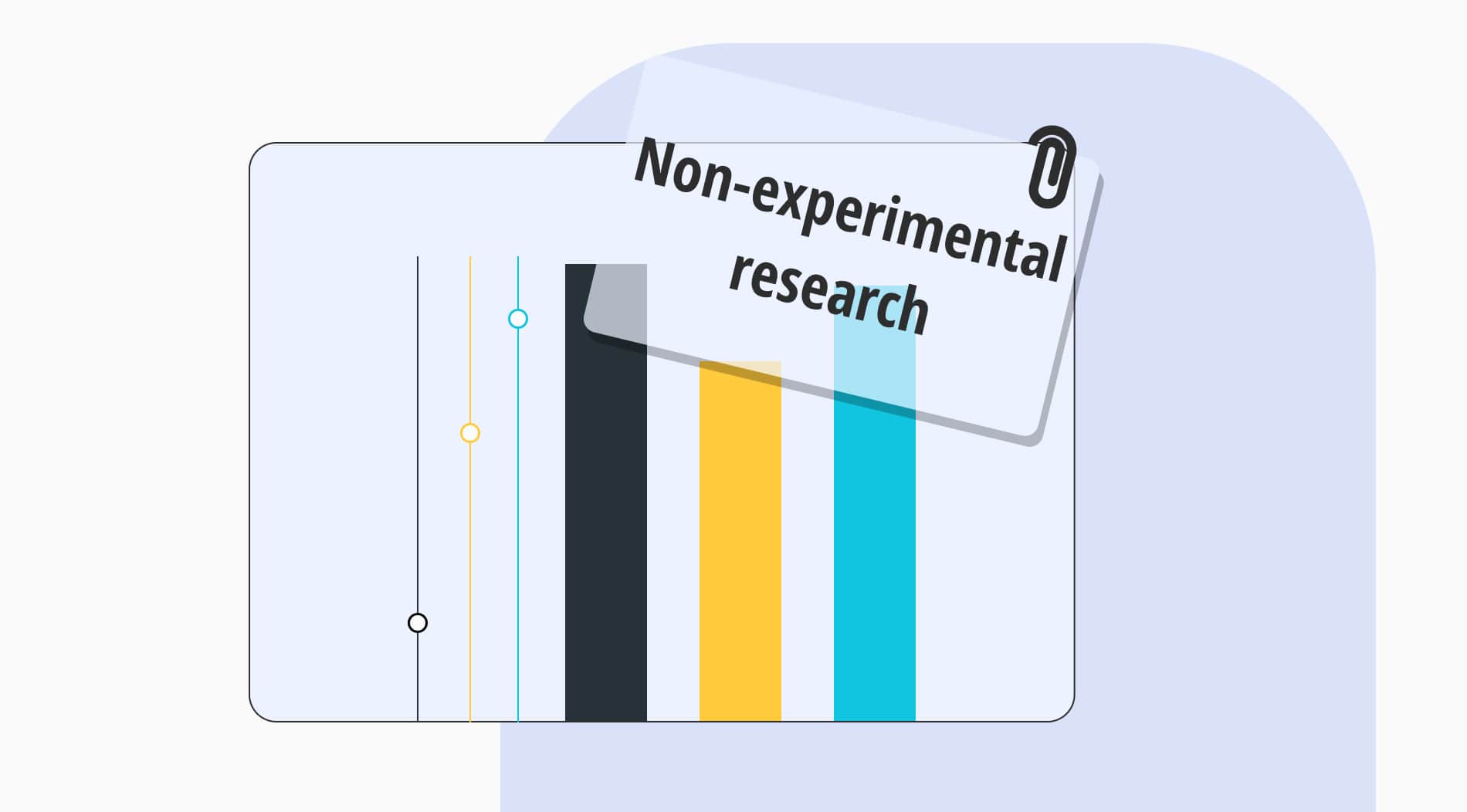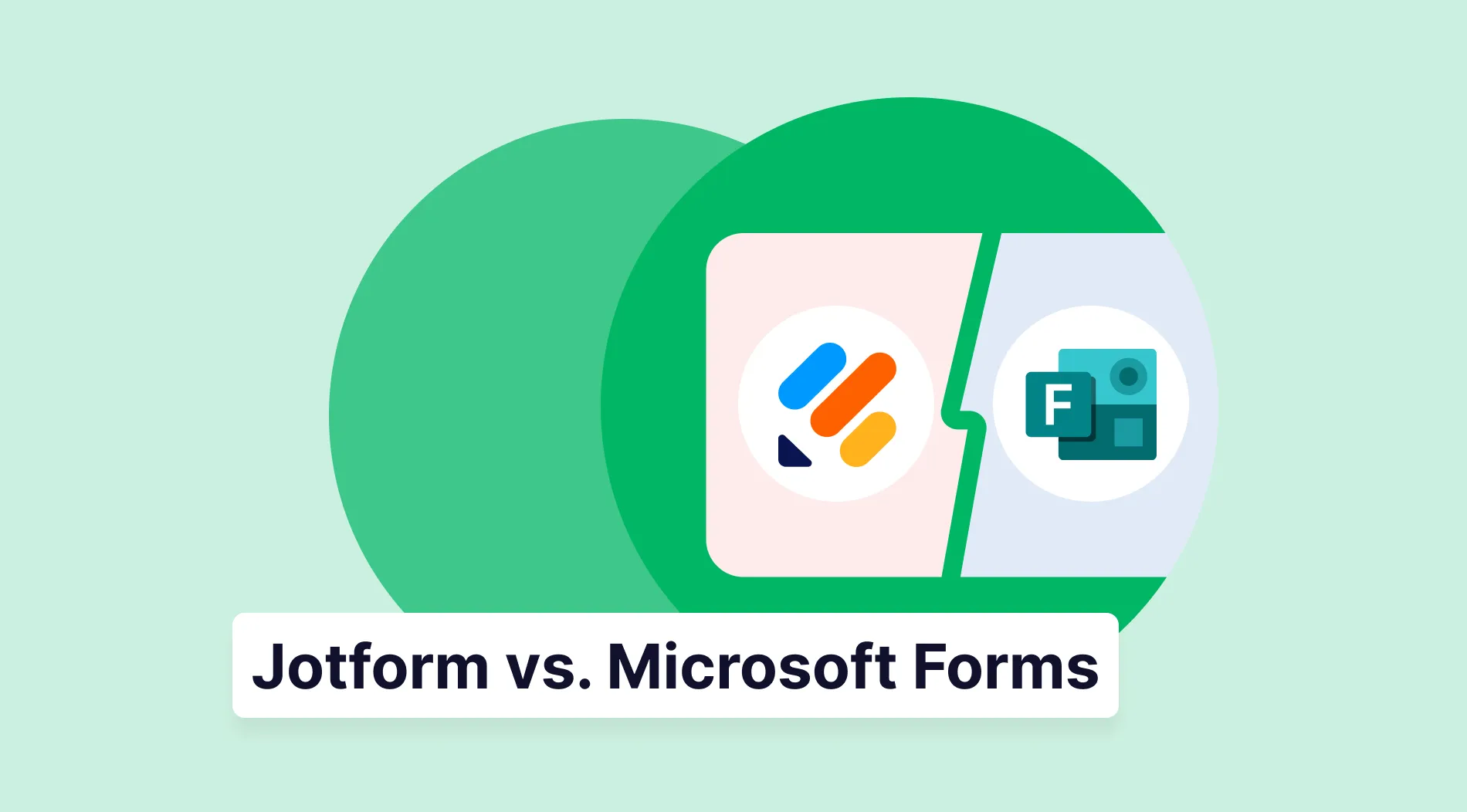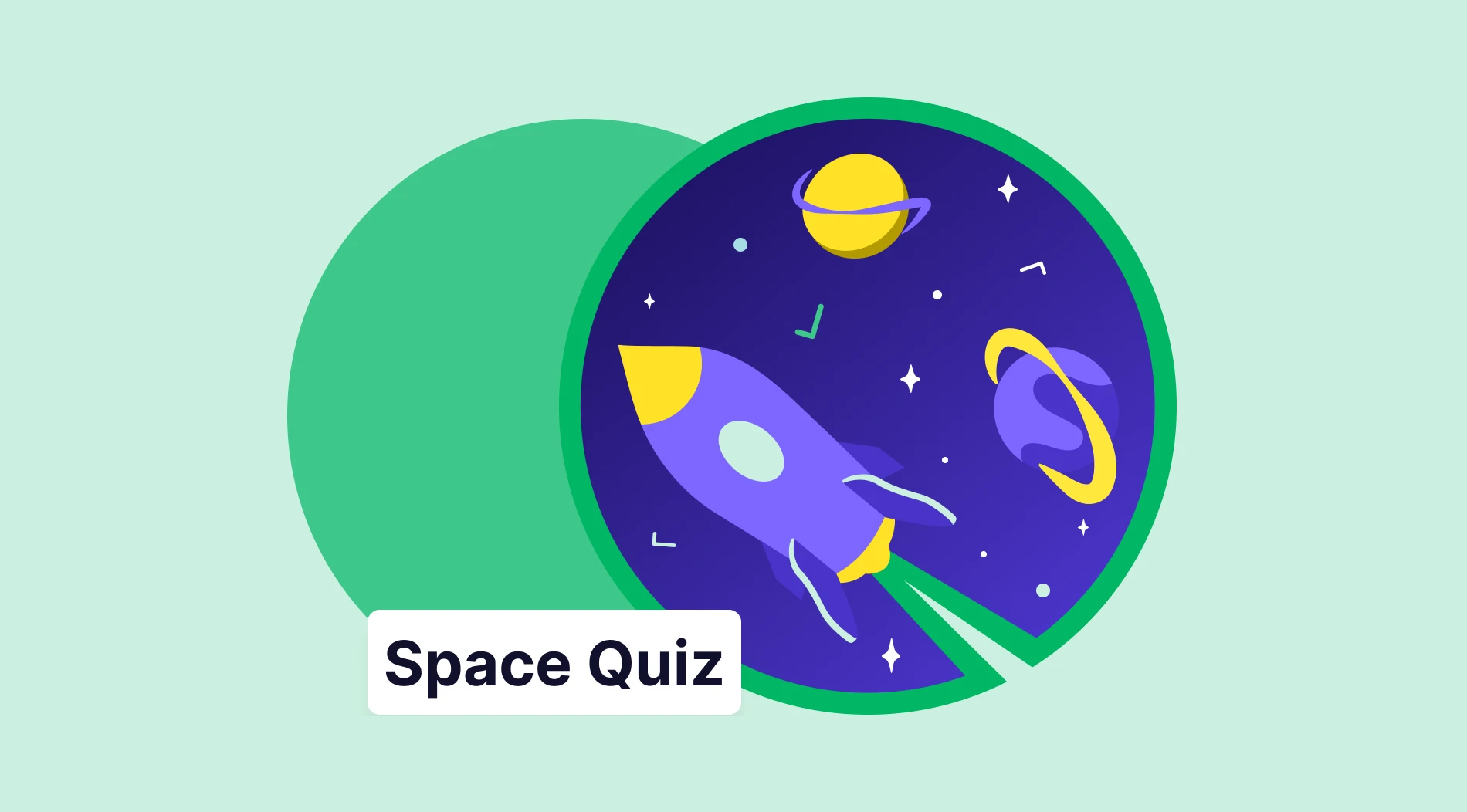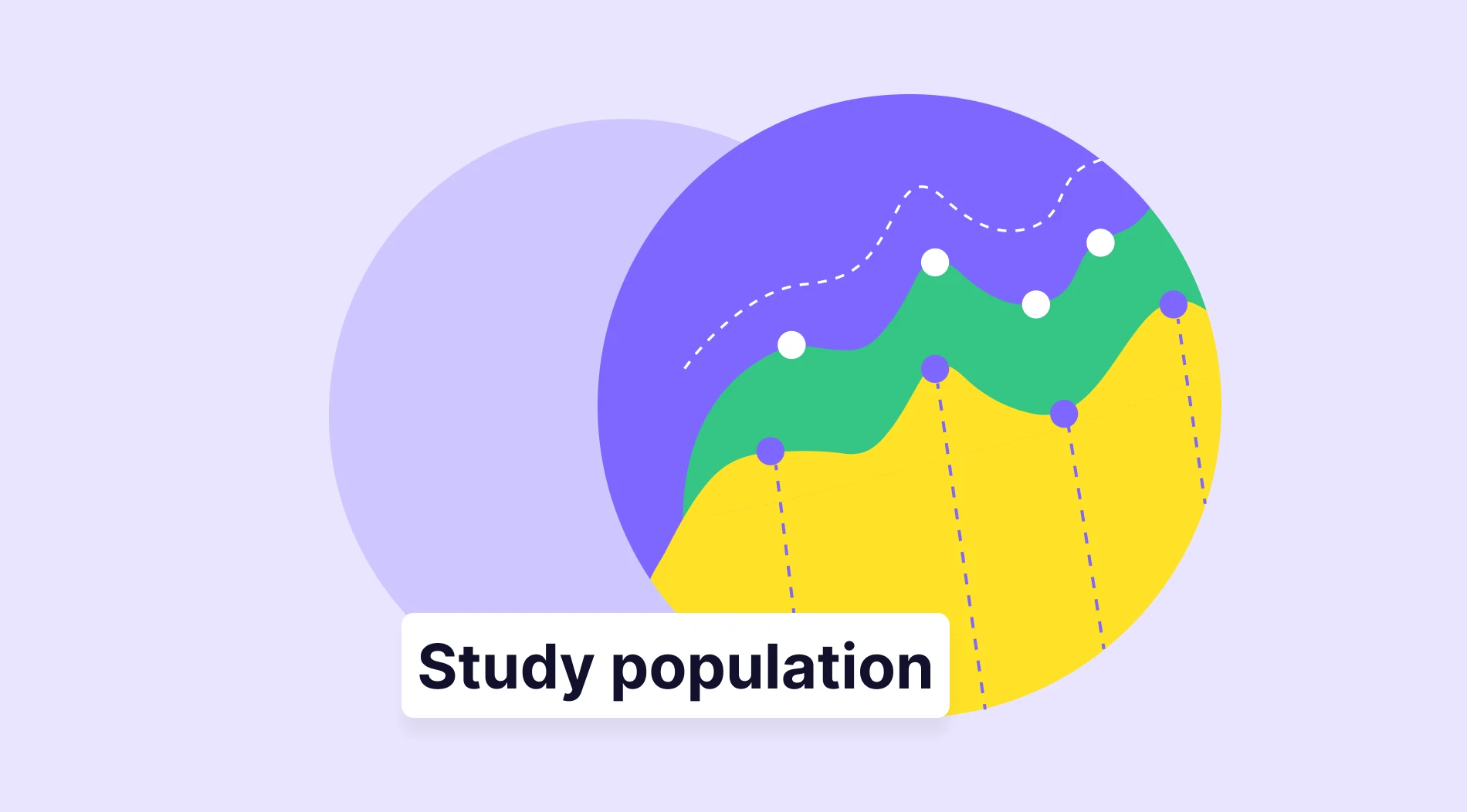The experimentation method is very useful for getting information on a specific subject. However, when experimenting is not possible or practical, there is another way of collecting data for those interested. It's a non-experimental way, to say the least.
In this article, we have gathered information on non-experimental research, clearly defined what it is and when one should use it, and listed the types of non-experimental research. We also gave some useful examples to paint a better picture. Let us get started.
What is non-experimental research?
Non-experimental research is a type of research design that is based on observation and measuring instead of experimentation with randomly assigned participants.
What characterizes this research design is the fact that it lacks the manipulation of independent variables. Because of this fact, the non-experimental research is based on naturally occurring conditions, and there is no involvement of external interventions. Therefore, the researchers doing this method must not rely heavily on interviews, surveys, or case studies.
When to use non-experimental research?
An experiment is done when a researcher is investigating the relationship between one or two phenomena and has a theory or hypothesis on the relationship between two variables that are involved. The researcher can carry out an experiment when it is ethical, possible, and feasible to do one.
However, when an experiment can not be done because of a limitation, then they decide to opt for a non-experimental research design. Non-experimental research is considered preferable in some conditions, including:
- When the manipulation of the independent variable is not possible because of ethical or practical concerns
- When the subjects of an experimental design can not be randomly assigned to treatments.
- When the research question is too extensive or it relates to a general experience.
- When researchers want to do a starter research before investing in more extensive research.
- When the research question is about the statistical relationship between variables, but in a noncausal context.
Characteristics of non-experimental research
Non-experimental research has some characteristics that clearly define the framework of this research method. They provide a clear distinction between experimental design and non-experimental design. Let us see some of them:
- Non-experimental research does not involve the manipulation of variables.
- The aim of this research type is to explore the factors as they naturally occur.
- This method is used when experimentation is not possible because of ethical or practical reasons.
- Instead of creating a sample or participant group, the existing groups or natural thresholds are used during the research.
- This research method is not about finding causality between two variables.
- Most studies are done on past events or historical occurrences to make sense of specific research questions.
Types of non-experimental research
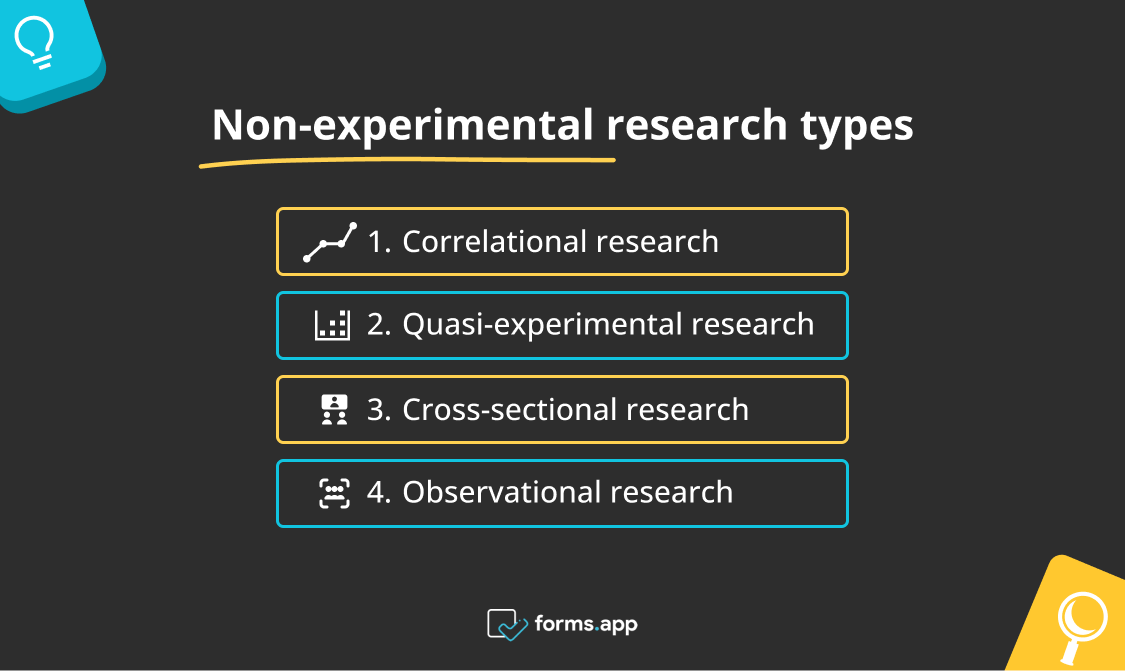
Non-experimental research types
What makes research non-experimental research is the fact that the researcher does not manipulate the factors, does not randomly assign the participants, and observes the existing groups. But this research method can also be divided into different types. These types are:
Correlational research:
In correlation studies, the researcher does not manipulate the variables and is not interested in controlling the extraneous variables. They only observe and assess the relationship between them. For example, a researcher examines students’ study hours every day and their overall academic performance. The positive correlation this between study hours and academic performance suggests a statistical association.
Quasi-experimental research:
In quasi-experimental research, the researcher does not randomly assign the participants into two groups. Because you can not deliberately deprive someone of treatment, the researcher uses natural thresholds or dividing points. For example, examining students from two different high schools with different education methods.
Cross-sectional research:
In cross-sectional research, the researcher studies and compares a portion of a population at the same time. It does not involve random assignment or any outside manipulation. For example, a study on smokers and non-smokers in a specific area.
Observational research:
In observational research, the researcher once again does not manipulate any aspect of the study, and their main focus is observation of the participants. For example, a researcher examining a group of children playing in a playground would be a good example.
Non-experimental research examples
Non-experimental research is a good way of collecting information and exploring relationships between variables. It can be used in numerous fields, from social sciences, economics, psychology, education, and market research. When gathering information using secondary research is not enough and an experiment can not be done, this method can bring out new information.
Non-experimental research example #1
Imagine a researcher who wants to see the connection between mobile phone usage before bedtime and the amount of sleep adults get in a night. They can gather a group of individuals to observe and present them with some questions asking about the details of their day, frequency and duration of phone usage, quality of sleep, etc. And observe them by analyzing the findings.
Non-experimental research example #2
Imagine a researcher who wants to explore the correlation between job satisfaction levels among employees and what are the factors that affect this. The researcher can gather all the information they get about the employees’ ages, sexes, positions in the company, working patterns, demographic information, etc.
The research provides the researcher with all the information to make an analysis to identify correlations and patterns. Then, it is possible for researchers and administrators to make informed predictions.
Frequently asked questions about non-experimental research
There are some situations where non-experimental research is not suitable or the best choice. For example, the aim of non-experimental research is not about finding causality therefore, if the researcher wants to explore the relationship between two variables, then this method is not for them. Also, if the control over the variables is extremely important to the test of a theory, then experimentation is a more appropriate option.
Experimental research is an example of primary research where the researcher takes control of all the variables, randomly assigns the participants into different groups, and studies them in a pre-determined environment to test a hypothesis.
On the contrary, non-experimental research does not intervene in any way and only observes and studies the participants in their natural environments to make sense of a phenomenon
The same as true experimentation, quasi-experiment research also aims to explore a cause-and-effect relationship between independent and dependent variables. However, in quasi-experimental research, the participants are not randomly selected. They are assigned to groups based on non-random criteria.
Yes, as the main purpose of a survey or questionnaire is to collect information from participants without outside interference, it makes the survey a non-experimental study. Surveys are used by researchers when experimentation is not possible because of ethical reasons, but first-hand data is needed
Non-experimental data is data collected by researchers via using non-experimental methods such as observations, interpretation, and interactions. Non-experimental data could both be qualitative or quantitative, depending on the situation.
Non-experimental research has its positive sides that a researcher should have in mind when going through a study. They can start their research by going through the advantages. These advantages are:
- It is used to observe and analyze past events.
- This method is more affordable than a true experiment.
- As the researcher can adapt the methods during the study, this research type is more flexible than an experimental study.
- This method allows the researchers to answer specific questions.
Even though non-experimental research has its advantages, it also has some disadvantages a researcher should be mindful of. Here are some of them:
- The findings of non-experimental research can not be generalized to the whole population. Therefore, it has low external validity.
- This research is used to explore only a single variable.
- Non-experimental research designs are prone to researcher bias and may not produce neutral results.
Final words
A non-experimental study differs from an experimental study in that there is no intervention or change of internal or extraneous elements. It is a smart way to collect information without the limitations of experimentation. These limitations could be about ethical or practical problems. When you can not do proper experimentation, your other option is to study existing conditions and groups to draw conclusions. This is a non-experimental design.
In this article, we have gathered information on non-experimental research to shed light on the details of this research method. If you are thinking of doing a study, make sure to have this information in mind. And lastly, do not forget to visit our articles on other research methods and so much more!
forms.app, your free form builder
- Unlimited views
- Unlimited questions
- Unlimited notifications

